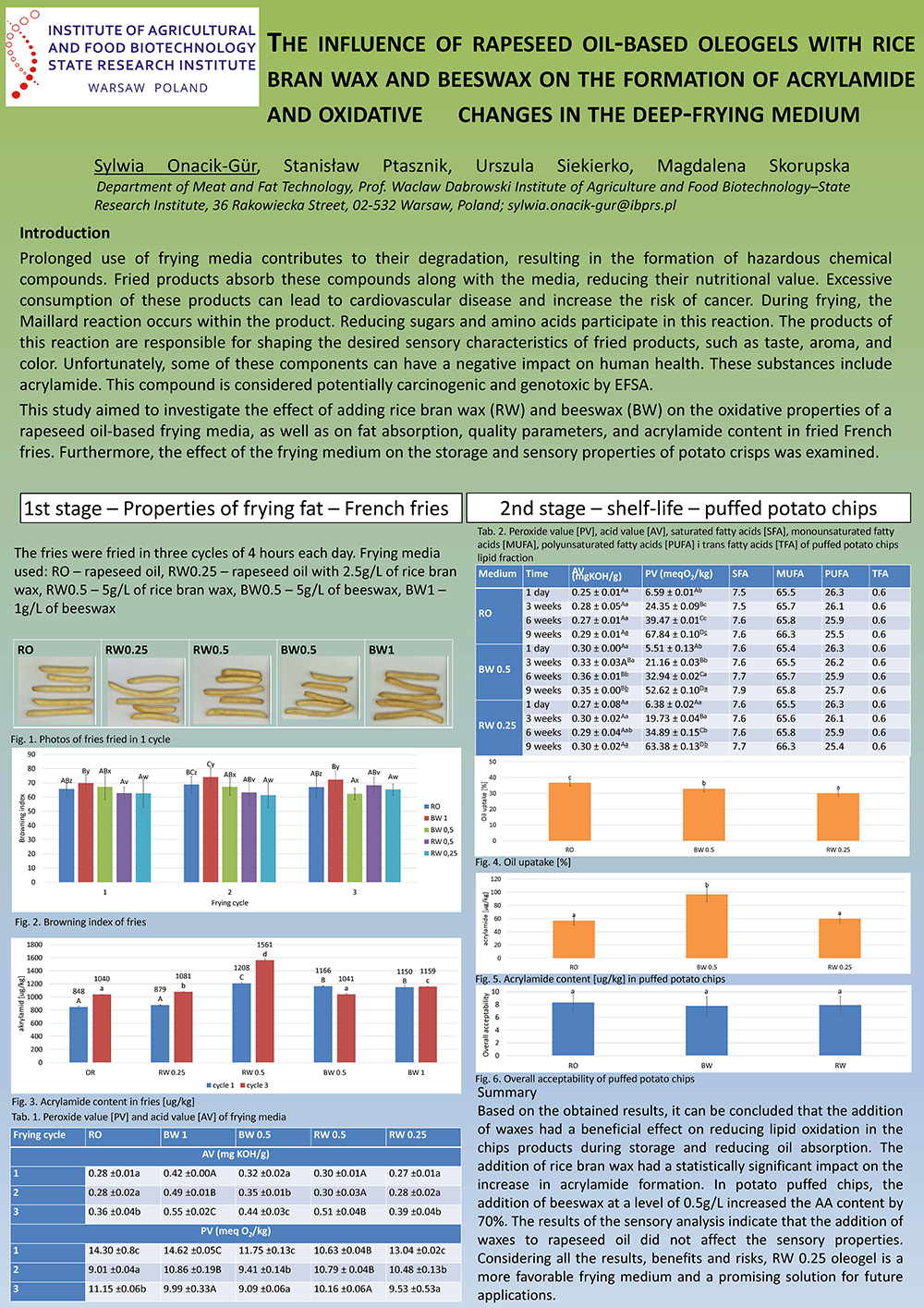Currently, scientists and food technologists are showing growing interest in oleogels, lipid systems created by the formation of a three-dimensional crystalline network of oleogels, such as wax, in liquid oil. To enhance the nutritional value of such a lipid system, it can be made with an oil rich in valuable polyunsaturated fatty acids from the n-3 and n-6 families, such as rapeseed oil.
Prolonged use of the frying medium contributes to its degradation, resulting in the formation of hazardous chemical compounds. Fried products absorb these compounds along with the medium, reducing their nutritional value. Excessive consumption of these products can lead to cardiovascular diseases and increase the risk of cancer. During frying, the Maillard reaction occurs in the product. This reaction is highly complex and occurs at temperatures above 120°C. Reducing sugars and amino acids participate in this reaction. The products of this reaction are responsible for imparting the desired sensory characteristics of fried products, including taste, aroma, and color. Unfortunately, some of these components can have a negative impact on human health. One of these substances is acrylamide. According to the European Food Safety Authority, this compound is considered potentially carcinogenic and genotoxic.
This study aimed to investigate the effect of rice bran wax (RW) and beeswax (BW) on the oxidative properties of a rapeseed oil-based frying medium, as well as on the fat absorption, quality parameters, and acrylamide content of fried French fries. Furthermore, the effect of the frying medium on the storage and sensory properties of potato crisps was examined.
The addition of waxes was observed to increase the acid number of frying media, but the level of this indicator during three frying cycles did not exceed the limit specified in the Regulation of the Minister of Health, which is 2.5 mg KOH/g of fat. During frying, the level of unsaturated fatty acids decreased similarly in all frying media. RW contributed to a significant reduction in fat absorption in both French fries and crisps. The addition of waxes may increase acrylamide content in French fries and crisps. Only the use of RW at the lowest level of 25 g/1000 ml of oil did not contribute to a statistically significant increase in this substance. During the nine-week storage of crisps fried in oil with the addition of wax, the oxidation process of the lipid fraction occurred more slowly than in products fried in oil alone. Sensory evaluation revealed no statistically significant differences between products fried in oil with and without the addition of wax.
This research was financed by the Oil Plants Promotion Fund, based on agreement no. 4/ZMT/2022 with the Polish Association of Oil Producers.
